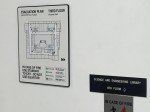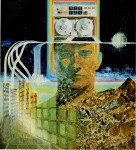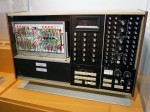Gender disparities between men and women in science, technology, engineering and mathematics have considerably decreased, as the percentage of women with bachelor’s degrees in engineering, mathematics and the sciences have risen steadily from 1970 to 2012. However, women are still underrepresented in STEM, especially in engineering, computer science and the physical sciences. UCLA is no […]
Category Archives: Academics
Lost in Boelter: Finding a way out
Communication is key in computer science. That may seem apparent when we’re talking about machines – networks are, after all, built off of communication between routers and computer systems. However, it’s also true when we’re talking about the field itself. Whether it is communication between software engineers and entrepreneurs or developers and project managers, communication […]
Lost in Boelter: Speaking the pseudo-language
One of the lesser–known skills computer science students pick up in college is the ability to create pseudo-languages. I’m not talking about coding languages, but systems of interpretation, where certain words and phrases map to particular meanings. These pseudo-languages aren’t spoken, but reveal themselves in almost every part of the field, such as in network […]
Lost in Boelter: Code-switchable
One doesn’t usually associate staring at a computer screen with self-reflection – except for, of course, when you’re staring at a glossy screen. Surprisingly, I’ve recently noticed myself doing a great deal of both throughout my experience with computer science. Among the many things I have learned about problem solving, I have also found myself […]
Lost in Boelter: Threat modeling
Have you ever wondered about those people who use cable locks for their laptops? Well, I’m one of them. Contrary to conventional wisdom, that doesn’t mean that I’m overly protective of my laptop or that I have something to hide. I’m just taking precautions that, arguably, few do. Now, you might say to yourself that […]
Lost in Boelter: Cracking the code behind encryption
NK DTZ’WJ WJFINSL YMNX RJXXFLJ, NY’X UWTGFGQD STY JSHWDUYJI Don’t worry, this isn’t a mistake. That line above is in fact gibberish. But, what if I told you that those seemingly random characters actually map to the following message? IF YOU’RE READING THIS MESSAGE, IT’S PROBABLY NOT ENCRYPTED. What I have just demonstrated is encryption, […]
Lost in Boelter: Does it compute?
When I was in elementary school, one of the weekly vocabulary exercises I had to complete was in the topic of “fields of study.” This basically meant that our class had to learn the etymology of many of those terms ending in the root “-ology,” or “field of study” – a task I’m sure we […]






